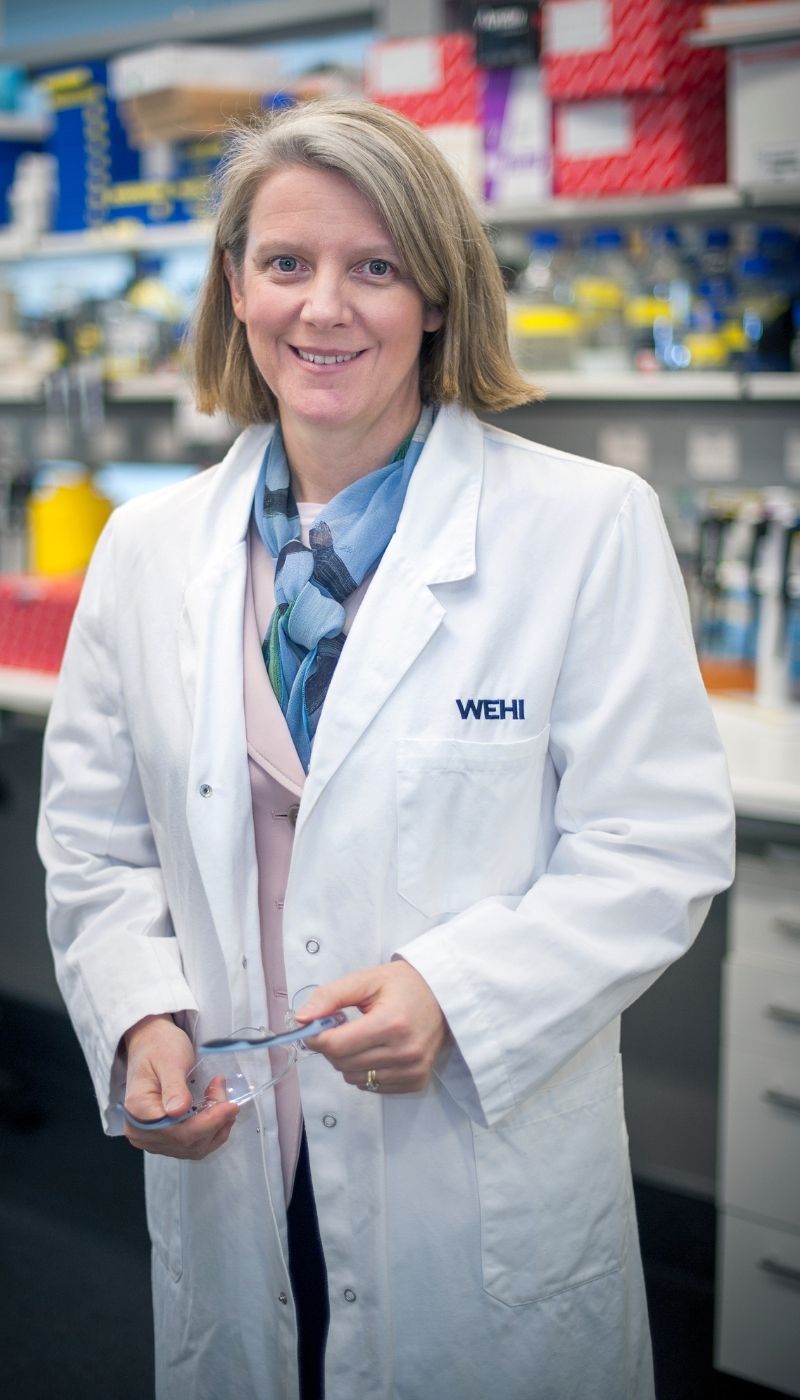New breakthrough in ovarian cancer research could extend powerful treatments called PARP inhibitors to a growing number of women.
More than 1200 women are diagnosed with ovarian cancer in Australia each year.
Hard to detect and challenging to treat, ovarian cancer has a five-year survival rate of just 46 per cent (by comparison the breast cancer rate is 91 per cent). Research at the University of Melbourne has uncovered targeted treatment shown in clinical trials to improve life outcomes for women with ovarian cancer.

Ovarian cancer is classified as a rare cancer – a cancer with an incidence of less than six per 100,000 of the population per year. Collectively rare cancers contribute significantly to cancer mortality in Australia. One third of Australians who die of cancer each year, die of a rare cancer. This is a large, complex problem to solve.
Professor Clare Scott and her research team at the Walter and Eliza Hall Institute of Medical Research (WEHI) have made significant advances in identifying targeted treatments for growing numbers of ovarian cancer patients. The program is supported through the generous philanthropy of Wayne and Marion Patten and with funding from the Stafford Fox Medical Research Foundation.
“A combination of surgery and chemotherapy will continue to be the first treatment in ovarian cancer but medical teams need more precise options to effectively target the molecular differences as they occur in individual patients, adapting to changes over time,” says Professor Scott.
“Our results show that targeted intervention can extend and even save lives.”

The role of gene silencing
In 2018, the WEHI research team led by Professor Clare Scott, uncovered why PARP inhibitors used to treat women with methylation or silencing of the BRCA1 gene was effective in some patients, but not others. Methylation of a gene is like wrapping the gene in cotton wool so that it can’t function or do its job. If it is wrapped tightly enough, then all copies of the gene are shut down and we say it is completely silenced.
A PARP inhibitor is a type of targeted drug used in the treatment of cancers that have acquired faults in the way they repair DNA, making them particularly sensitive to DNA-damaging drugs. BRCA1 and BRCA2 are well-known genes that, when faulty or mutated, make cancer cells susceptible to PARP inhibitors.
“PARP inhibitor therapy, discovered over ten years ago, was a game-changer, enabling targeted treatment of ovarian cancer for the first time, but we wanted to understand why it wasn’t effective for all patients with BRCA1 abnormalities, in particular for silencing of the gene,” explains Professor Clare Scott.
The study, published in Nature Communications, used patient-derived xenograft models, which are surgical samples that have been refined so they are pure cancer cells. The team was able to separate the patients into two groups after observing differences in their epigenetics.
They found that one group of patients had silencing of all copies of BRCA1 genes in their cancer, which meant the gene had been completely switched off. The other group only had partial silencing, which meant the gene hadn’t been totally switched off, so, the DNA repair pathway was not faulty, and for partially silenced cancers, the PARP inhibitor was ineffective.

Extending the treatment
The researchers have now identified that women with ‘epigenetic marks’ or ovarian cancers which silence a second DNA repair gene called RAD51C are also susceptible to PARP inhibitors.
And, similar to the earlier study, they found that if the RAD51C gene was only partially silenced, before or during therapy, ovarian cancers became resistant to PARP inhibitors, and the drug was ineffective.
The research, published in the journal Cancer Research, was led by WEHI researchers Dr Ksenija Nesic, Dr Matthew Wakefield and Professor Clare Scott, QIMR Berghofer researcher Dr Olga Kondrashova and Associate Professor Alexander Dobrovic from the University of Melbourne Department of Surgery, together with Australian and US collaborators.
Altogether, by studying samples donated by women with high-grade serous cancer, the researchers identified an extra 12 per cent of women with this aggressive form of ovarian cancer, who could benefit from PARP treatment and should be included in clinical trials.
The team used sophisticated preclinical models called PDX (patient-derived xenografts) to study the complex pattern of epigenetic marks associated with PARP inhibitor sensitivity. If only patient samples were studied, these marks would probably have continued to be missed.
The results showed that RAD51C silencing has to be absolute for the PARP inhibitor to work. If cancer has any residual DNA repair capabilities, or if these epigenetic marks are lost during treatment, it becomes resistant to the therapy.
This important finding suggests that the genetic configuration can change over time and should be monitored closely as patients undergo chemotherapy so they can be offered alternative therapies if the cancer loses its gene silencing.

Early access to PARP inhibitor therapy
There is still a long way to go before this treatment is widely available. Australian women with BRCA1/2 mutations – about 20 per cent of ovarian cancers – can access PARP inhibitors in early treatment. However, for the other 30 per cent of ovarian cancer patients likely to have abnormal DNA repair in their ovarian cancer, treatment is only available once their cancer has returned.
“Because of our work and that of others, we are convinced that PARP inhibitor therapy needs to be available to women following their initial chemotherapy – rather than waiting for their ovarian cancer to relapse,” says Professor Scott.
“This is because the longer you wait, the more ways there are for the cancer to develop resistance to the PARP inhibitor therapy – such as by losing “silencing” of - or losing the cotton wool wrapped around - BRCA1 or RAD51C, in the 12 percent of women we are describing here. It is essential that we continue to generate high quality clinical trial data to provide support for reimbursement for access for women to PARP inhibitor therapy in the first-line of treatment, prior to relapse of their cancer.”
The power of research ignited by giving
Researchers across the University of Melbourne’s medical precinct, are delivering life-extending and life-saving outcomes for patients of rare cancer.
The Marion Patten Ovarian Cancer Research Fund and the Marion Patten Fund have been supporting the University of Melbourne’s ongoing work redefining what is possible in rare cancer treatment since 2019.
“These funds help us to identify which rare cancers have specific rare mutations or methylation types to study – and that helps us to help other women – which is exactly what Marion wanted us to do,” says Professor Scott.
From 2021, the Wayne and Marion Patten Fund for Gynaecological Cancer Research Fund will further support rare cancer research using genomic sequencing led by Professor Sean Grimmond, Bertalli Chair in Cancer Medicine.
Marion sadly lost her battle with ovarian cancer, but the Patten gifts are giving hope to families just like their own across Australia.
Her husband Wayne Patten says: “If Marion were here, she would be so pleased that her donations are paving the way to early detection and advanced treatment of ovarian cancer. Her last goal in life was to minimize, as much as possible, the number of women that have to go through what she had to endure.”
“Thanks to Wayne and Marion, we are bringing real hope for a growing number of women who are accessing sequencing for their rare cancers for the first time. Together, we are changing lives,” says Professor Scott.
Join us in realising new possibilities in the race against rare cancers.